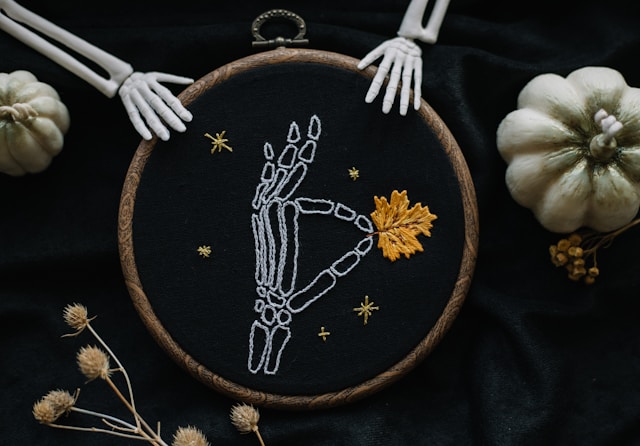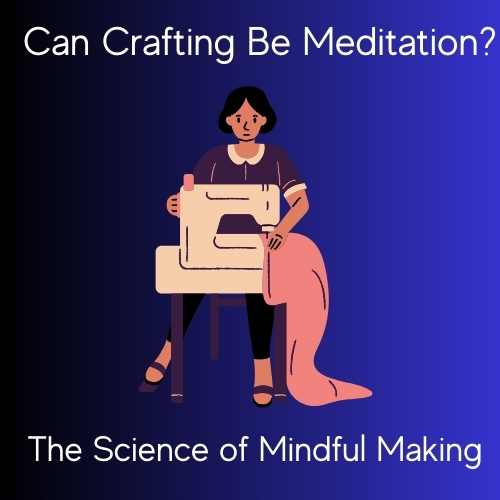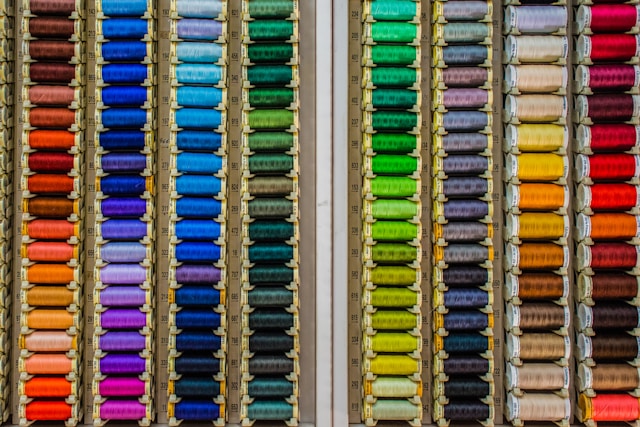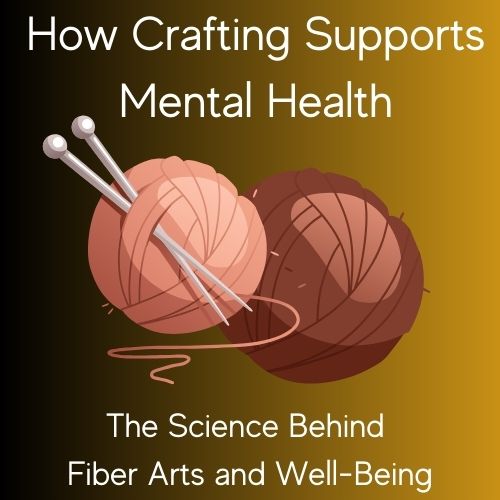In today’s fast-paced world, finding moments of calm can feel like searching for a hidden treasure. Yet, many who pick up a crochet hook, knitting needles, or sewing machine may already be familiar with a secret: crafting is more than just creating something beautiful—it can be a profound form of meditation.
In this post, we’ll explore how mindful making bridges the gap between creative expression and meditative practice, delve into the science behind meditation, and provide practical tips to transform your crafting routine into a mindful journey.
Explore this in more depth by joining my Craft to Heal workshop.
Understanding Meditation with Respect for Its Roots
Meditation is an ancient practice found in many cultures and spiritual traditions, particularly in Buddhism, Hinduism, and Indigenous ways of knowing. The concept of sitting in stillness or using movement, breath, and focus to connect with the present moment has existed for thousands of years, evolving in ways that are deeply tied to culture, community, and philosophy.
In the West, meditation has often been simplified or adapted to fit scientific frameworks, which, while valuable, can sometimes strip away the depth of these traditions. It’s important to acknowledge that while we discuss meditation in a way that reflects current psychological and neuroscientific research, this is just one lens among many. We honor the centuries of wisdom behind these practices and recognize that no singular definition of meditation can fully capture their complexity.
Meditation and Mindfulness: What’s the Difference?
While often used interchangeably, meditation and mindfulness have distinct qualities:
- Meditation is a structured practice that often involves setting aside time to cultivate awareness, concentration, or relaxation through techniques like breathwork, mantra repetition, or visualization.
- Mindfulness is the act of bringing attention to the present moment in daily life, without judgment. It can be practiced during formal meditation or in everyday activities—such as crafting.
The beauty of crafting is that it naturally blends these two practices. When you’re immersed in a creative process, you may experience both focused attention (meditation) and full presence (mindfulness).
The Connection Between Craft and Meditation
Crafting involves rhythmic, repetitive motions that can naturally lead to a meditative state. Whether you’re knitting, crocheting, or embroidering, the steady pace of your work encourages your mind to focus on the present moment. This process can slow down racing thoughts and allow you to enter a flow state—a term used by psychologists to describe being fully absorbed in an activity.
The sensory experience of crafting—the feel of yarn, the sound of needles clicking, the sight of colors blending—grounds you in the here and now. This sensory engagement mirrors many meditative practices that emphasize tuning into bodily sensations and surroundings.
The Benefits of Mindful Making
Scientific research on meditation and mindfulness has shown that these practices can reduce stress, lower blood pressure, and improve mental health. Similarly, engaging in crafting with intention can offer:
- Stress Reduction: The repetitive nature of crafting can calm the nervous system, making it a natural antidote to daily stress.
- Enhanced Focus and Creativity: By allowing your mind to rest from constant multi-tasking, mindful making can boost concentration and open up creative pathways.
- Emotional Well-Being: The satisfaction of completing a project and the process of creating something with your own hands can increase feelings of accomplishment and self-worth.
While we draw from scientific research in discussing these benefits, it’s also worth acknowledging that many cultures have long recognized the healing power of hands-on creative work—whether in quilting circles, Indigenous beadwork, or traditional textile arts passed down through generations. Crafting as a mindful, healing practice is not a new idea, but rather a modern recognition of something deeply human.

Techniques for Achieving Mindful Crafting
Integrating mindfulness into your crafting routine doesn’t require a complete lifestyle overhaul. Here are some practical strategies to help you transform your creative process into a meditative practice:
- Set an Intention: Before you begin, take a moment to set a clear intention. Whether it’s to relax, express yourself creatively, or simply enjoy the process, having a purpose can help focus your mind.
- Create a Calm Environment: Choose a quiet, comfortable space for your crafting. Dim the lights, play soft music, or light a candle—anything that helps signal to your brain that it’s time to unwind.
- Focus on the Process, Not the Outcome: Instead of obsessing over the final product, immerse yourself in the act of creating. Notice the sensations, sounds, and rhythms of your work.
- Incorporate Breathing Techniques: Pair your crafting with deep, intentional breaths. If you find your mind wandering, gently guide your focus back to your breathing and the movement of your hands.
- Embrace Imperfection: Just as in meditation, the goal isn’t to achieve perfection but to be present. Allow yourself to make mistakes and view them as part of the creative journey.
- Take Regular Breaks: If you feel your focus drifting, step away for a few moments. A short break can help reset your mind and maintain the meditative quality of your crafting.
Crafting as a Path to Healing
For many, crafting has evolved from a hobby into a sacred time of self-care. The slow, intentional pace of activities like knitting or quilting often becomes a moving meditation—an opportunity to slow down, listen to your inner voice, and nurture your well-being.
It’s important to recognize that different people come to crafting with different needs—some find peace in precision, while others enjoy the freedom of abstract expression. The key is not to force mindfulness but to allow it to emerge naturally through your creative practice.




